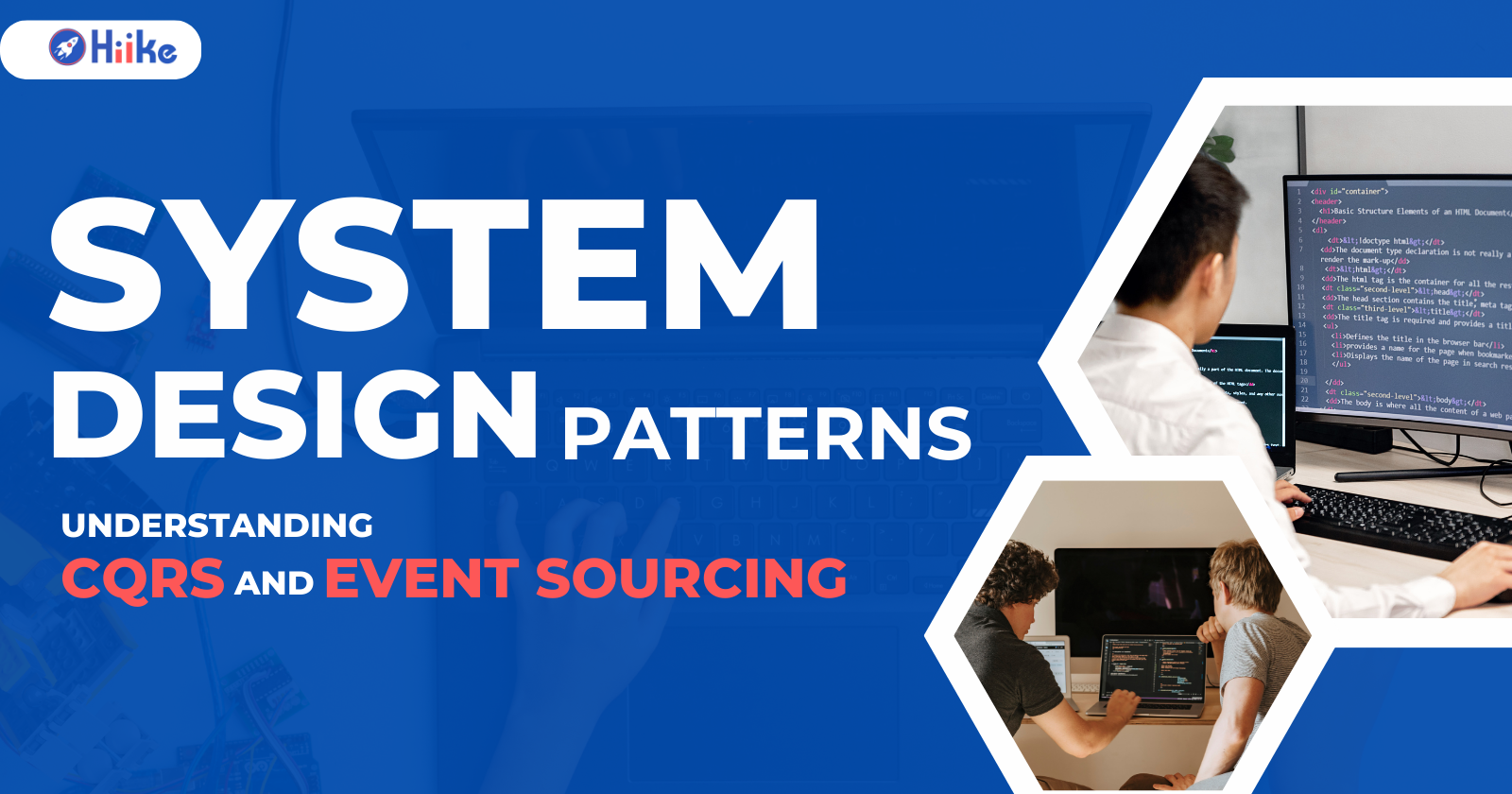System Design Patterns: Understanding CQRS and Event Sourcing
 Hiike
Hiike
In the world of software engineering, system design patterns play a crucial role in building robust, scalable, and maintainable applications. Two such patterns that have gained significant popularity are CQRS (Command Query Responsibility Segregation) and Event Sourcing. In this blog post, we will delve into these patterns, explore their practical applications, and discuss best practices for implementing them effectively.
Introduction to System Design Patterns
System design patterns are general reusable solutions to common problems encountered in software architecture. They provide a standardized approach to solving recurring design issues, ensuring that systems are designed efficiently and effectively. Patterns like CQRS and Event Sourcing help in creating systems that are easier to scale, maintain, and understand.
Explanation of CQRS and Event Sourcing
Command Query Responsibility Segregation (CQRS)
CQRS is a pattern that separates the read and write operations of a data store. This means that the responsibility of handling commands (writes) and queries (reads) is segregated into different models.
Key Concepts:
Command Model: Handles all the write operations. It ensures that commands are processed correctly and the data is updated accordingly.
Query Model: Handles all the read operations. It retrieves data from the database and presents it in the required format.
Benefits of CQRS:
Scalability: Read and write operations can be scaled independently.
Optimized Performance: Queries can be optimized without affecting the command model.
Improved Security: Write operations can be more securely handled.
Event Sourcing
Event Sourcing is a pattern where state changes are stored as a sequence of events. Instead of storing just the current state, every change to the state is recorded, and the current state is derived by replaying these events.
Key Concepts:
Event Store: A database that stores all the events. Each event represents a state change.
Event Handler: Processes the events and updates the system state.
Benefits of Event Sourcing:
Auditability: Every change to the system state is recorded, providing a complete audit trail.
Reproducibility: The system state can be reconstructed by replaying the events.
Flexibility: Events can be replayed to create different projections of the data.
Practical Examples and Case Studies
Example 1: E-commerce Platform
In an e-commerce platform, CQRS can be used to handle different aspects of the system efficiently. The command model can handle actions like placing an order, updating product information, and managing inventory. The query model can handle actions like retrieving product details, checking order status, and searching for products.
Event Sourcing can be used to keep track of all changes in the system. For example, when an order is placed, an event is created and stored. This event can then be used to update the inventory, send notifications, and generate reports.
Example 2: Banking System
In a banking system, CQRS can be used to separate the processing of transactions (commands) from the retrieval of account balances and transaction histories (queries).
Event Sourcing can ensure that every transaction (deposit, withdrawal, transfer) is recorded as an event. This not only helps in maintaining a complete history of all transactions but also allows for easy reconstruction of account states if needed.
Tools and Resources for Implementation
Tools for CQRS
Axon Framework: A Java framework for implementing CQRS and Event Sourcing applications.
Marten: A .NET library that supports CQRS and Event Sourcing.
Commanded: An Elixir library for CQRS and Event Sourcing.
Tools for Event Sourcing
EventStoreDB: A database optimized for storing events.
Kafka: A distributed streaming platform that can be used to handle event streams.
Akka Persistence: A toolkit for building Event Sourced systems in Scala and Java.
Best Practices for Using These Patterns
CQRS Best Practices
Separate Models Clearly: Ensure that the command and query models are clearly separated to avoid confusion and maintainability issues.
Optimize Queries: Design the query model to handle read operations efficiently, using appropriate indexing and caching strategies.
Handle Commands Securely: Ensure that command handling includes proper validation and authorization to maintain data integrity and security.
Event Sourcing Best Practices
Store Immutable Events: Ensure that events are immutable and represent a single change in the system state.
Use Versioning: Implement versioning for events to handle changes in the event structure over time.
Ensure Idempotency: Make sure that event handlers are idempotent to handle scenarios where the same event might be processed multiple times.
Conclusion
Understanding and implementing system design patterns like CQRS and Event Sourcing can significantly enhance the robustness, scalability, and maintainability of your applications. By separating the responsibilities of commands and queries, and by recording every change as an event, you can build systems that are both flexible and resilient.
At Hiike, we are committed to helping you master these advanced concepts through our Top 30 Program. Our comprehensive courses on data structures, algorithms, and system design, combined with real-world scenarios and expert mentorship, ensure that you are thoroughly prepared to excel in your tech career. Join Hiike today and take the first step towards mastering system design patterns and other critical software engineering skills.
Subscribe to my newsletter
Read articles from Hiike directly inside your inbox. Subscribe to the newsletter, and don't miss out.
Written by

Hiike
Hiike
🌟𝐇𝐢𝐢𝐤𝐞 - Crafting Your Tech Odyssey! 🚀 Join Hiike for immersive learning, expert mentorship, and accelerated career growth. Our IITian-led courses and vibrant community ensure you excel in Data Structures, Algorithms, and System Design. Transform your tech career with Hiike today!